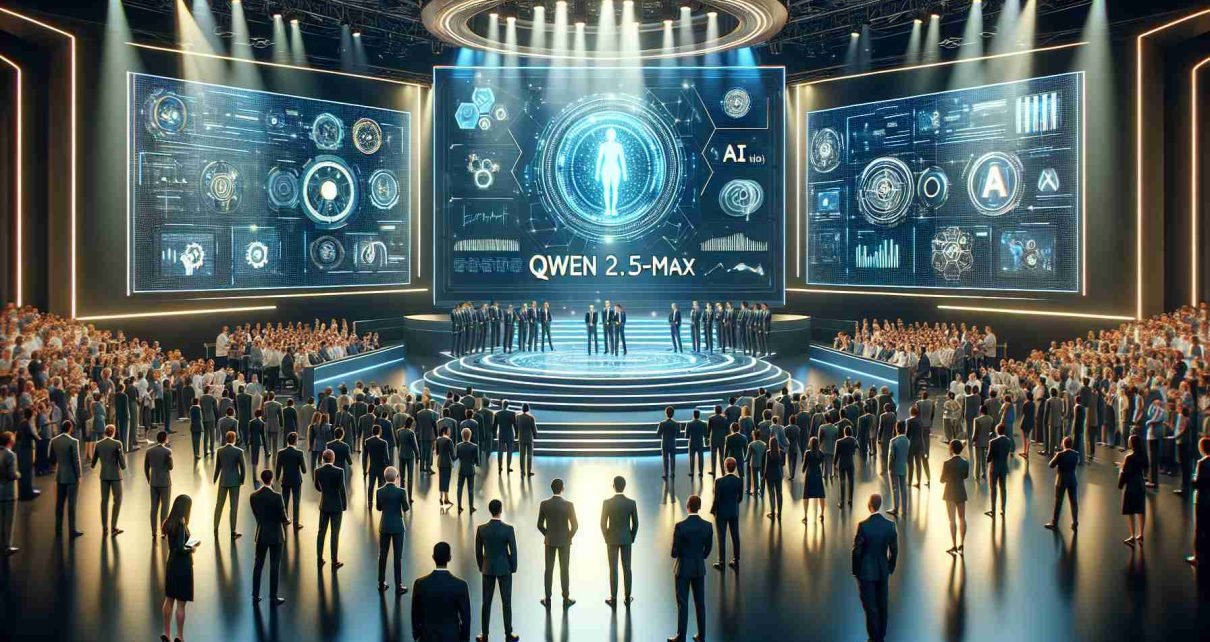Introduction to DeepSeek and ChatGPT
DeepSeek represents a significant advancement in the realm of artificial intelligence, emerging as a cutting-edge platform designed for various applications, including natural language processing and machine learning. Developed by a team of AI experts, DeepSeek aims to bridge the gap between complex data sets and user-friendly interfaces, fostering a more intuitive interaction between machines and humans. Its origins trace back to the need for a robust system that can efficiently analyze vast amounts of information while also providing contextually relevant outputs. Notably, DeepSeek incorporates advanced algorithms and machine learning techniques that enhance its ability to learn continuously from user interactions, making it an adaptive platform capable of evolving over time.
ChatGPT, developed by OpenAI, is one of the most recognized conversational AI models to date. It harnesses the transformer architecture to engage users in interactive dialogues, enabling it to generate human-like responses across various topics. Originally designed to enhance communication and information retrieval, ChatGPT has become a vital tool for businesses and individuals seeking reliable conversational partners. The model has undergone several iterations, each improving its contextual understanding and response generation capabilities, thereby solidifying its place in the competitive landscape of AI-driven conversational agents. With its extensive training on diverse datasets, ChatGPT excels in generating coherent narratives and sophisticated conversations.
As we delve deeper into the comparative analysis between DeepSeek and ChatGPT, it becomes evident that both platforms bring unique functionalities to the table. While ChatGPT is renowned for its conversational prowess, DeepSeek offers unparalleled data interaction and analysis capabilities, setting the stage for an exciting exploration into the strengths and weaknesses of these two innovative AI technologies.
The Rise of DeepSeek
DeepSeek has emerged as a notable competitor in the landscape of artificial intelligence, particularly in natural language processing. This innovative platform has gained traction in recent times, showcasing a remarkable growth trajectory that underscores its potential to challenge established players like ChatGPT. One of the most significant factors contributing to DeepSeek’s ascendancy is its enhanced natural language processing capabilities. By leveraging advanced algorithms and extensive training datasets, DeepSeek is able to generate responses that are not only contextually relevant but also linguistically sophisticated.
In addition to its superior language processing, DeepSeek offers improved contextual understanding, which allows it to maintain coherent dialogues over sustained interactions. This ability to grasp nuances in conversation empowers users to engage with the platform in a more meaningful way, bridging the gap between human-like interaction and artificial intelligence. Developers have also recognized the advantage of integrating DeepSeek into their applications, as the platform’s design prioritizes seamless interaction and user experience, making it an appealing choice for various use cases.
Furthermore, the recent enhancements in user experience have set DeepSeek apart from its competitors. The platform provides personalized responses, adapting to individual user preferences and styles. This level of customization fosters a deeper connection between the user and the AI, which is crucial for applications in fields such as customer service and personal assistance. As businesses increasingly seek to utilize AI to enhance engagement, DeepSeek positions itself as a compelling solution, blending advanced technology with an intuitive interface.
Ultimately, the rise of DeepSeek signifies a transformative shift in the AI landscape, where its continuous innovations are driving a fundamental change in how users interact with conversational agents. As the platform continues to evolve, it holds promise for future developments that may further redefine natural language processing and user interaction.
Why ChatGPT is Losing Ground
As the landscape of AI-driven conversational agents evolves, ChatGPT faces mounting challenges that hinder its standing in the market. The emergence of competitors like DeepSeek has prompted a reassessment of ChatGPT’s capabilities, revealing some critical areas where it may be falling short. One significant concern is the accuracy of ChatGPT’s responses. Users have increasingly reported instances where the AI-generated answers lack the precision necessary for complex inquiries, leading to frustrations and diminished trust in its reliability.
Moreover, the depth of conversations that ChatGPT can engage in has been highlighted as a limitation. While it can simulate human-like interactions to some extent, many users have observed that the depth of insight and nuance offered by ChatGPT often fails to meet expectations, particularly when addressing specialized subjects. This superficial engagement can result in a less satisfying user experience, prompting users to seek alternatives that provide more comprehensive and contextual understanding of their queries.
Critics have also voiced concerns regarding the overall responsiveness and adaptability of ChatGPT in dynamic conversational scenarios. Feedback indicates that, in many cases, the algorithm struggles to maintain the context over extended interactions, causing a disjointed conversation flow. This deficiency has not gone unnoticed, particularly among users who require more sophisticated dialogue management for professional or educational purposes.
In addition to these challenges, competitors like DeepSeek are capitalizing on these shortcomings by offering innovative features that enhance user engagement and produce higher quality outputs. As these alternatives gain traction, the combination of response accuracy issues, conversational depth limitations, and user critiques present a compelling case for why ChatGPT is losing ground in an increasingly competitive landscape.
User Feedback: A Comparative Analysis
In the increasingly competitive landscape of AI-driven conversational agents, user feedback plays a crucial role in determining the effectiveness and appeal of platforms like DeepSeek and ChatGPT. A thorough examination of user reviews reveals varying levels of satisfaction and expectations from each platform, highlighting their strengths and weaknesses based on actual usage experiences.
Users of DeepSeek frequently commend its intuitive interface and responsive query handling, often noting its ability to provide precise and contextually relevant answers. Many users suggest that the platform’s advanced algorithms excel in comprehending nuances in conversation, which significantly enhances user engagement. This adaptability appears to inspire greater trust and leads to more frequent use. Additionally, users have commented on the seamless integration of DeepSeek with various applications, which they appreciate for boosting productivity in professional settings.
Conversely, ChatGPT maintains a strong user base that values its versatility and extensive conversational capabilities. Feedback highlights ChatGPT’s proficiency in producing creative content and engaging in casual dialogue, making it a preferred choice for users seeking a more interactive and dynamic conversational experience. However, some critiques arise regarding the occasional inconsistencies in the quality of responses and the need for context-specific adjustments. Users have suggested improvements in these areas to enhance its overall performance.
When comparing user dissatisfaction, both platforms face unique challenges. DeepSeek users have expressed the desire for more personalization options, while ChatGPT users have voiced concerns about the occasional lack of depth in responses. These insights underscore the necessity for continuous improvement as both platforms strive to meet evolving user needs.
Ultimately, user feedback provides invaluable information that can help both DeepSeek and ChatGPT refine their offerings. Understanding the differing expectations and preferences of their respective user bases will aid in shaping future enhancements to better serve their audiences.
Technological Edge: DeepSeek’s Innovations
DeepSeek has emerged as a formidable contender in the realm of conversational AI, harnessing a series of advanced technological innovations that set it apart from existing solutions, including ChatGPT. At the core of DeepSeek’s capability lies its sophisticated algorithms, which have been meticulously crafted to enhance understanding and generate human-like responses. These algorithms utilize deep learning techniques to process vast amounts of data, enabling the platform to capture the nuances of language with remarkable precision.
Another significant aspect of DeepSeek’s technological edge is its use of machine learning enhancements. These enhancements allow DeepSeek to continually improve and adapt based on user interactions. By leveraging feedback mechanisms and real-time learning, the system can refine its outputs, making the conversational experience remarkably fluid and intuitive. This dynamic adaptability gives DeepSeek a substantial advantage, enabling it to meet user needs more effectively than traditional models.
In addition to algorithms and machine learning, DeepSeek seamlessly integrates various cutting-edge tools into its framework. These tools are designed to support not just natural language processing but also sentiment analysis and context-awareness. Such features empower DeepSeek to recognize emotional cues and contextual references within dialogues, which significantly enriches the interactive experience. Users can expect a level of engagement that feels more personal and relevant, addressing concerns of disconnection often noted in simpler chatbots.
Ultimately, the combination of these technological innovations positions DeepSeek as a superior alternative to ChatGPT. As the AI landscape evolves, it is essential for platforms to integrate complex algorithms, machine learning capabilities, and advanced tools to meet user expectations. DeepSeek exemplifies this evolution, setting a new benchmark for conversational AI technologies.
Industry Impact: Shifts in Usage and Trends
The emergence of DeepSeek represents a significant shift in the artificial intelligence landscape, particularly in how businesses, creators, and developers opt to deploy AI solutions. The capabilities of DeepSeek, which are designed to enhance user experience, may lead to a noticeable migration away from existing platforms such as ChatGPT. This evolution in AI tools is likely to redefine engagement metrics, setting new benchmarks for user interaction that could reshape the entire industry.
As companies begin to integrate DeepSeek into their operations, we may witness a profound transformation in customer service strategies. Enhanced understanding of user intent and improved predictive capabilities will enable organizations to tailor their services more effectively. Businesses could leverage DeepSeek’s technology to foster deeper relationships with customers, optimizing engagement through personalized communication. This could render traditional systems, like those built on ChatGPT, less effective in meeting evolving user expectations.
Moreover, the increase in adoption of DeepSeek may catalyze new trends in how creators perceive and utilize AI. As a tool for content generation, DeepSeek can potentially offer more nuanced and context-aware outputs, encouraging developers and content creators to rethink their methodologies. This shift may lead to the development of more sophisticated algorithms that prioritize user engagement, ensuring that content not only fulfills informational needs but also resonates emotionally with audiences.
The evolving dynamics of the industry are indicative of a larger trend toward more adaptable and intelligent AI models. As DeepSeek gains traction, traditional AI deployment frameworks may become obsolete, highlighting the necessity for continuous innovation. Businesses that hesitate to adapt to these changes risk falling behind as user expectations evolve, necessitating a reevaluation of engagement strategies moving forward.
Future Predictions: The AI Landscape Ahead
The AI landscape is rapidly evolving, with emerging technologies redefining how we engage with digital platforms. As competition intensifies between entities like DeepSeek and ChatGPT, industry experts predict significant transformations in user experience and functionality. One key prediction is the rise of personalized artificial intelligence services that cater to individual user preferences, enhancing the efficiency and relevance of responses provided by these platforms.
Furthermore, advancements in natural language processing and understanding are anticipated to result in more nuanced conversations. Experts suggest that AI will increasingly integrate a deeper understanding of context, leading to richer interactions. This evolution will not only strengthen user engagement but also empower AI systems to deliver more targeted solutions, whether users are seeking information, entertainment, or assistance.
Moreover, the competitive dynamics of platforms like DeepSeek and ChatGPT may foster a culture of rapid innovation. Companies will likely focus on enhancing their algorithms to ensure superior performance. Enhanced machine learning models could provide AI systems with the ability to learn continuously, adapting to evolving user needs continuously.
Another noteworthy consideration is the potential ethical implications of AI advancements. As technologies become more sophisticated, ethical discussions surrounding data privacy, security, and bias in AI systems are expected to gain prominence. It is predicted that regulatory frameworks will emerge, guiding the responsible development and deployment of AI technologies to protect users while fostering innovation.
Ultimately, the competition between DeepSeek and ChatGPT is indicative of a larger shift in the AI landscape. As these platforms vie for supremacy, users can expect to benefit from cutting-edge advancements that prioritize personalization and ethical standards, shaping a more intelligent and user-centric digital experience in the future.
Implications for Developers and Businesses
The emergence of DeepSeek presents a critical juncture for developers and businesses aiming to remain competitive in the rapidly evolving artificial intelligence landscape. With DeepSeek’s advanced functionalities positioning it as a formidable alternative to ChatGPT, organizations must adopt strategic considerations to effectively integrate this new platform. Developers should thoroughly assess their existing applications and determine how DeepSeek’s capabilities can enhance their offerings. This may involve re-evaluating application architectures to ensure seamless integration and improved user experiences.
In addition to integration strategies, businesses should consider the potential of DeepSeek to redefine their operational processes. For instance, companies currently utilizing ChatGPT for customer support or content generation should conduct a comprehensive analysis of how DeepSeek can not only replicate these functionalities but also introduce enhanced features. By leveraging DeepSeek’s capabilities, organizations may drive improved efficiency, accuracy, and even cost savings in various departments. Developers are encouraged to familiarize themselves with DeepSeek’s documentation and community resources to unlock its full potential.
Furthermore, the competition brings about the necessity for ongoing innovation. Companies must be open to experimenting with new AI tools and sharing insights within their teams to foster an adaptive culture. Regularly revisiting and refining AI investments will allow organizations to remain responsive to emerging trends. Allocating budget toward AI research and development may provide a competitive advantage, establishing businesses as leaders in AI-driven solutions.
In essence, the rise of DeepSeek requires developers and businesses to acknowledge the changing dynamics of the AI market. By thoughtfully integrating and adapting their strategies to incorporate DeepSeek, organizations can position themselves for sustained growth and success, utilizing cutting-edge technology to meet evolving consumer demands and expectations.
Conclusion: The New Era of Conversational AI
As we navigate through the rapidly evolving landscape of conversational artificial intelligence, it is evident that innovations such as DeepSeek are redefining the standards that were previously set by models like ChatGPT. DeepSeek represents a significant leap forward, presenting an architecture that not only enhances understanding but also improves the coherence and context-awareness of generated responses. Such breakthroughs are crucial for applications across various sectors, from customer service to mental health and education.
The advancements made by DeepSeek highlight the necessity for ongoing research and development in the AI field. Its ability to engage in nuanced conversations, coupled with an impressive ability to learn from interactions, positions it as a formidable competitor in the realm of AI-driven communication. Companies and individuals alike stand to benefit from the efficiencies and heightened user experiences that these advancements bring forth.
Moreover, the transformative impact of DeepSeek signals a shift from traditional models that focused primarily on text generation without sufficient contextual relevance. This shift invites stakeholders to consider the implications of such technology not only from a technical standpoint but also regarding ethical and societal aspects. As these powerful tools become more prevalent, it is imperative for developers to maintain a commitment to responsible AI practices.
In this new era of conversational AI, continuous engagement with advancements and emerging technologies like DeepSeek is essential. Industry professionals, academics, and casual observers alike should stay informed about developments in this exciting field. By doing so, they can better prepare for the changes that these innovations will inevitably bring, ensuring that they leverage the full potential of AI while addressing the challenges that accompany its integration into daily life. The future of communication is here, and it’s imperative to embrace it responsibly and knowledgeably.






